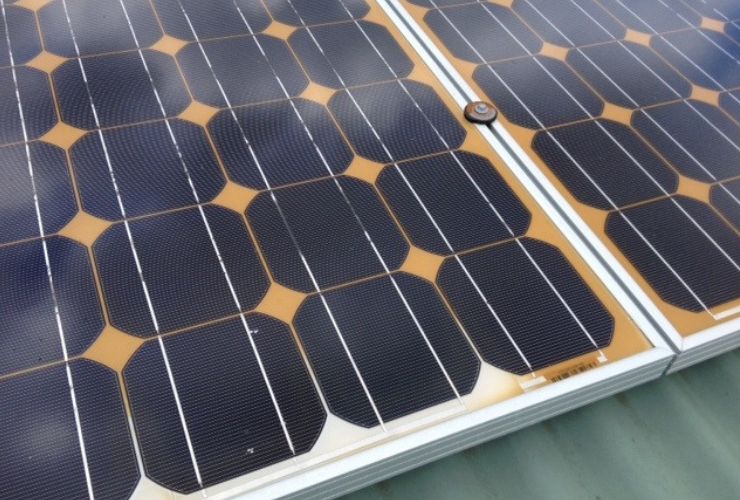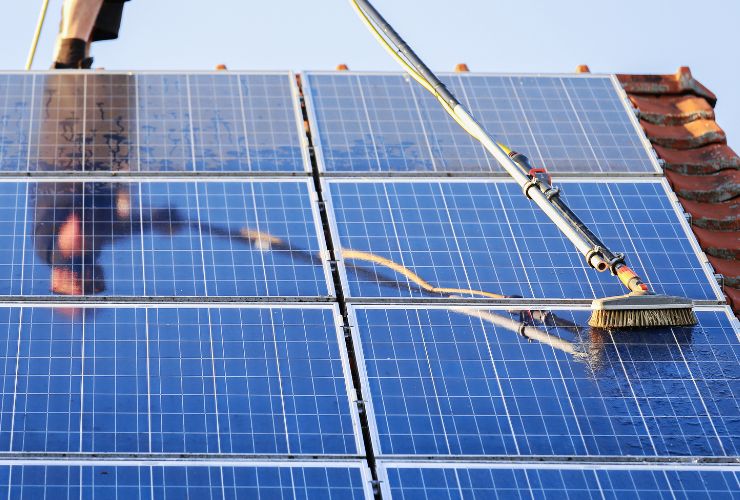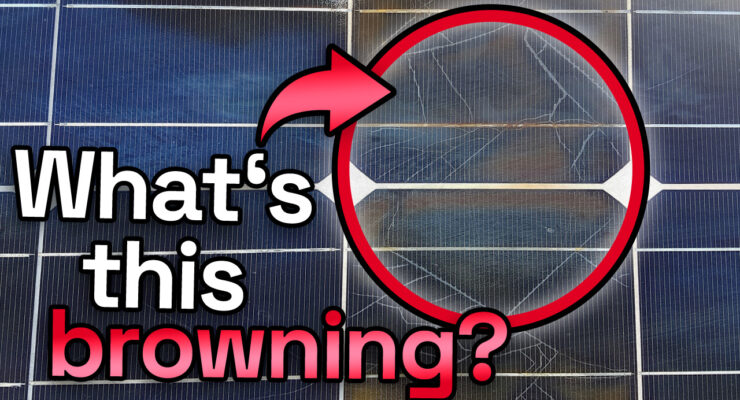Fast read
Solar panel yellowing or browning can be caused by exposure to extreme UV sunlight or a chemical reaction that produces acetic acid.
When some chemicals are used to clean the panels' glass or if there are traces of this chemical in the air, acetic acid can develop, and low-quality panels' ethylene vinyl acetate (EVA) can turn yellow and cause discolouration.
A solar system should be purchased using recognised brand solar panels, and the EVA should be of high quality to avoid discolouration over time. Once the system is set up, routine expert cleaning is recommended to monitor for any discolouration.
Another form of discolouration can be specific hot spots on certain cells. This can decrease the electrical efficiency of the panel, resulting in energy losses and rising temperatures that further enhance the browning process and eventually can make the panel's glass crack. The panel will then gain water ingress at the next rain shower and, over a short time, will fail.
Yellow solar panels, is this a good or bad sign?
A solar power system is a long-term investment you want to get the most out of over a long period. So seeing your solar panel turning brown and yellow would be a significant disappointment.
This is called solar panel discolouration. Another form of discolouration is single brown spots on the panel. So why does it happen, and can you do anything to stop it?
Why do yellow solar panels occur?
Acetic acid formation
The most common reason for yellow solar panels is because of a chemical reaction causing acetic acid to form. In extremely cheap budget panels, certain chemicals used to clean the panels’ glass, even in manufacturing, react with the chemicals in the cells. This reaction causes acetic acid to be formed. This acid causes the browning or yellowing of the solar panel backing sheet under the Australian and NZ sun.
While in many instances initially, this appearance change does not result in a panel performance reduction, over time, the backing sheet can develop minor cracks, and water can enter the panel, causing corrosion and eventual failure. So if you notice a dip in the output of your system, you can contact a professional to check the panels.

Exposure to sun and microcracks
Another reason yellow solar panels can occur is exposure to too much sun. This may be surprising as panels are meant to be exposed to sunlight. Still, issues commonly happen if the panel’s ethylene vinyl acetate (EVA) needs to be of better quality and have higher UV protection.
The function of the EVA is to maintain the panel’s resilience to UV rays. When solar panel manufacturers utilise low-quality EVA, the solar panel starts displaying browning or yellowing after prolonged exposure to Australia’s strong UV rays.
Hot spots
individual brown spots appear on specific cells, also known as hotspots. For instance, suppose a panel undergoes poor handling during manufacture, transport, or installation, resulting in one or two half-cut cells receiving multiple microcracks inside the panel, typically not visible to the naked eye.
These microcracks will now have a higher resistance to electron flows, as the electrons have to jump a minute gap. Resistance means more energy/heat is given off in this area. Over time the increased heat of this cell leads to further deterioration, and one gets a runaway effect, where this part of the panel will always be hotter than surrounding areas.
Eventually, the solar cell will become brown and scorching hot and, over time, will cause the glass to crack in that particular area. This is known as a hotspot and will eventually lead to panel failure.
Can you prevent hot spots?
Purchasing a reputable panel brand
The first step to avoiding yellow solar panels comes before purchasing your solar system. You should buy your system from a reputable brand and a local solar installer. Avoid the heavily advertised solar systems from large-scale installers at cheap prices – they will disappoint when the company closes their doors in a few short years. The result will be poor.
Once you believe you’ve decided on the solar panel system you’ll buy, inquire about the product and performance warranty and the brand’s experience in Australia and NZ. If they have been here for over a decade without hotspots or yellowing issues, that’s a good sign.

Regular cleaning
As mentioned earlier, a common cause of yellow solar panels arises from a chemical reaction because of the cleaning chemicals used. Thus, maintaining solar panels becomes crucial to ensure optimal system performance. Cleaning your panels every 4 – 5 years is necessary if you’re not in an area with regular strong rainfall and if the panels are tilted.
Where people go wrong is when they try to clean the panels by themselves. They use washing detergent, a high-pressure washer or another home-cleaning mixture and assume it will be ok to use on the panels.



